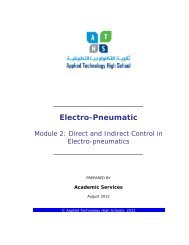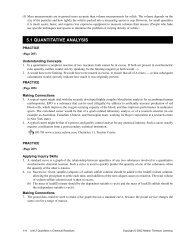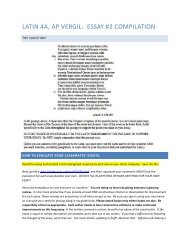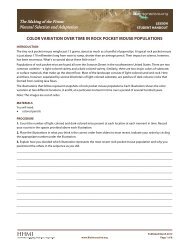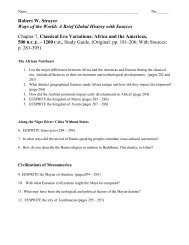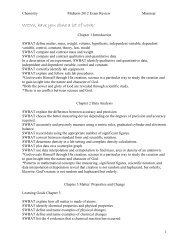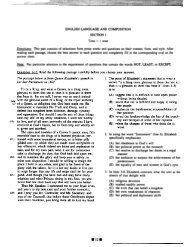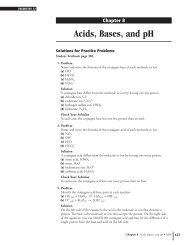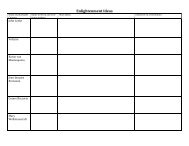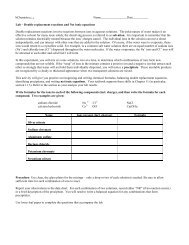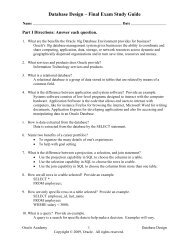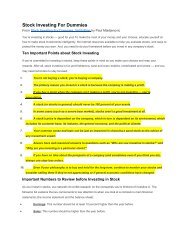Sol Equil KEY - Quia
Sol Equil KEY - Quia
Sol Equil KEY - Quia
Create successful ePaper yourself
Turn your PDF publications into a flip-book with our unique Google optimized e-Paper software.
What were common student errors or omissions?<br />
Part (a)(i): Some students included [PbI 2 ] in the equilibrium constant expression, and some omitted the<br />
charges on Pb 2+ and I − .<br />
Part (a)(ii): Some students indicated that [I − ] = (1.3 × 10 −3 ) 2 = 1.7 × 10 −6 , and some made errors with<br />
significant figures.<br />
Part (a)(ii) and (a)(iii): Some students made errors with significant figures.<br />
Part (b): Many students indicated that the concentration was inversely (or directly) proportional to<br />
volume. Many stated (correctly) that concentration is independent of volume but failed to refer to the<br />
saturated solution, equilibrium, or K sp .<br />
Part (c): Many students stated that solid NaI would have no effect on the equilibrium constant. Incorrect<br />
explanations included indicating that the change in volume causes a dilution that affects [Pb 2+ ], that the<br />
added Na + crowds the Pb 2+ , and that if [I − ] increases [Pb 2+ ] also has to increase.<br />
Part (d)(i): Some students failed to use the concentration and volume data given and calculated [Ba 2+ ] and<br />
[CrO 4 2− ] (incorrectly) from the given K sp .<br />
Part (d)(ii): Many students indicated that since Q ≠ K sp , no precipitate forms, while others indicated that<br />
if [Ba 2+ ] = [CrO 2− 4 ], no precipitate forms.<br />
Based on your experience of student responses at the AP Reading, what message would<br />
you like to send to teachers that might help them to improve the performance of their<br />
students on the exam?<br />
• Stress the distinction between amount (moles), volume (liters), and concentration (molarity), and<br />
which (if any) of these quantities remains unchanged in various lab situations (dilution,<br />
equilibrium, etc.).<br />
• Stress the interpretation of numerical data and “reasonable” values. Students should be able to<br />
estimate order-of-magnitude values for quantities without performing calculations and should be<br />
able to recognize chemically absurd values.<br />
• Differentiate between experimental contexts that are described by different types of equilibrium<br />
constants: K eq , K , K p c , K sp , K a , K b .<br />
• Students should understand reaction stoichiometry and be able to use that to calculate the<br />
concentration of molecular and ionic species in solution.<br />
Question 2<br />
What was the intent of this question?<br />
The intent of this question was to test students’ knowledge of basic thermodynamic relationships,<br />
including enthalpy, entropy, and free energy changes, and the equilibrium constant associated with a<br />
chemical reaction. The first task was to calculate the values for enthalpy, entropy, and free energy<br />
changes from the information provided. Students were asked what the calculated thermodynamic<br />
2<br />
© 2006 The College Board. All rights reserved.<br />
Visit apcentral.collegeboard.com (for AP professionals) and www.collegeboard.com/apstudents (for students and parents).



